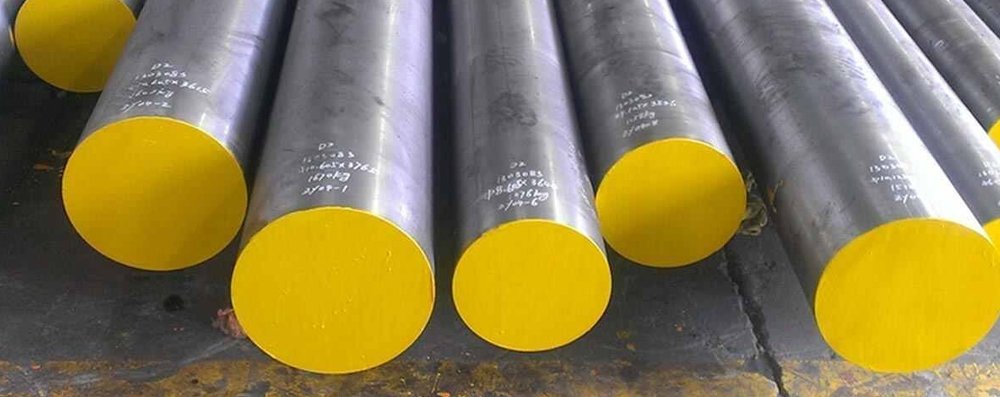Introduction
CK45 is a medium-carbon steel grade with high strength, excellent wear resistance, and good machinability. It is widely used in applications where high strength and toughness are essential. CK45 is often used for manufacturing parts that undergo mechanical stress and require excellent surface hardening properties. This grade is commonly used for components such as shafts, gears, and axles. It is also known as AISI 1045 in the American steel grading system.
Standards and Equivalent Grades:
- Shafts: High strength shafts for automotive and industrial applications.
- Gears: Components for high-stress environments like gear systems and transmissions.
- Axles: Axles for vehicles, trucks, and heavy machinery.
- Connecting rods: Used in engines for better fatigue resistance.
- Crankshafts: Crankshafts in automotive and heavy machinery.
Properties of CK45 Grade:
- Medium carbon steel offering a good balance of strength, toughness, and wear resistance.
- Good machinability in the annealed or normalized condition.
- Excellent hardenability when properly heat treated.
- Moderate weld ability with the right precautions.
- Superior fatigue strength for mechanical components subjected to cyclic loading.
- Pins and bolts: High-strength bolts and pins used in construction and machinery.
- Industrial equipment: Various other mechanical components requiring medium-strength materials.
Chemical Composition (Typical):
| Element | Content (%) |
| Carbon (C) | 0.42 – 0.50 |
| Manganese (Mn) | 0.60 – 0.90 |
| Silicon (Si) | 0.10 – 0.35 |
| Sulfur (S) | ≤ 0.05 |
| Phosphorus (P) | ≤ 0.05 |
| Iron (Fe) | Balance |
Mechanical Properties (Typical in Normalized Condition):
| Property | Value |
| Tensile Strength | 600 – 750 MPa |
| Yield Strength | 400 MPa min |
| Elongation (in 50 mm) | 14% min |
| Impact Strength (Charpy V-notch) | 40 J min |
| Hardness (Brinell) | 170 – 250 HB |
| Hardness (After Hardening and Tempering) | 280 – 320 HB |
Physical Properties:
| Property | Value |
| Density | 7.85 g/cm³ |
| Modulus of Elasticity | ~210 GPa |
| Thermal Conductivity | ~50 W/m·K |
| Specific Heat Capacity | ~480 J/kg·K |
| Electrical Resistivity | ~0.16 µΩ·m |
Forging:
- Forging Temperature Range: 950°C – 1200°C.
- Forge at 1100°C to 1200°C, ensuring uniform heating.
- Do not forge below 850°C to avoid embrittlement.
- After forging, slow cooling in air or a controlled environment is recommended to prevent internal stresses.
Heat Treatment:
- Annealing: Heat to 680°C – 700°C, hold for sufficient time, and then cool slowly to relieve stresses and increase machinability.
- Normalizing: Heat to 820°C – 880°C, then air cool to refine grain structure and increase toughness.
- Hardening: Heat to 830°C – 860°C, then quench in oil or water depending on section thickness for maximum hardness.
- Tempering: After hardening, temper at 550°C – 650°C to achieve the desired mechanical properties.
Dimensional Tolerances:
- Hot Rolled Bars: Follow BS 970 standard or similar guidelines.
- Cold Drawn Bars: Achieve tighter dimensional tolerances.
- Machined Bars: Fine tolerances achievable for precision applications.
- Tolerances for straightness, roundness, and flatness available as per customer specifications.
Machinability:
- Good machinability in the normalized or annealed condition, suitable for turning, milling, and drilling.
- After hardening, machining may require carbide tooling or coated tools due to increased hardness.
- Cutting Fluids are recommended for better surface finish and extended tool life.
Corrosion Resistance:
- Limited corrosion resistance in its untreated form.
- Suitable for use in dry or mildly corrosive environments but must be protected in harsh conditions.
- Protective coatings such as oiling, painting, or plating (e.g., galvanizing) are recommended for exposed applications.
Weldability:
- Moderate weldability with proper preheating.
- For thick sections, preheating to 150°C – 250°C is advised to prevent cracking.
- Low-hydrogen electrodes and appropriate filler materials are recommended.
- Post-weld heat treatment may be required to restore mechanical properties in welded areas.
Available Form:
- Hot Rolled Round Bars
- Cold Drawn Bars
- Precision Ground Bars
- Forged Bars
- Flat Bars
- Custom shapes and sizes available as per customer requirements
- Supplied in normalized, annealed, or quenched and tempered conditions for specific applications.
Conclusion:
CK45 Carbon Steel is a medium-carbon steel that offers an excellent balance between strength, toughness, and machinability. Its versatile properties make it ideal for use in a wide range of mechanical engineering applications. With proper heat treatment, CK45 exhibits excellent hardness and wear resistance, making it suitable for critical components in machinery, automotive, and industrial sectors.
Related Products :20C8, ASTM A36, 20MN2, 55C8, 40C8, C45, ASTM SA-105, C50, C20, C55, EN3B, C55 Mn2, C60, C45, EN9, EN8, EN8D, IS 2062, EN43B, S355J2G3, S40C, SAE 1010, SAE 1018, ST52.3, 20MN2, Maps


